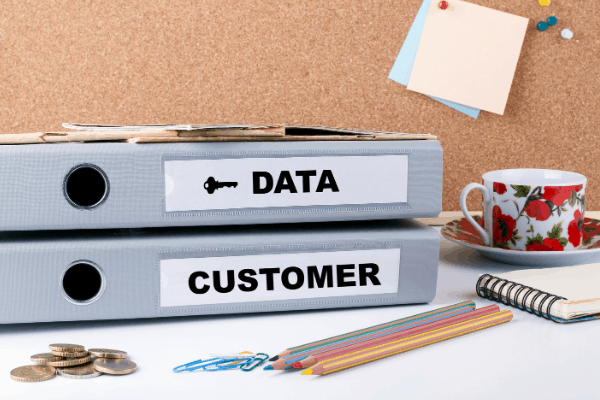In the last year, the shift to ecommerce and the rise of direct-to-consumer business models have accelerated beyond expectations, creating a need for traditional consumer brands to rethink everything about how they do business. But this fast pace has also demonstrated that effective change can only be made if you have a finger on the pulse of the market at all times.
From now on, the brands that pivot successfully will be those making informed decisions based on continually refreshed, accurate, and contextualized data from all corners of their complex and ever-evolving market ecosystem.
McKinsey reports that data-driven organizations are 23x more likely to attract new customers, 6x more likely to retain customers, and 19x more likely to be profitable. Is your organization prepared to compete? If not, you’re not alone; many brands are discovering that the market research that got them to where they are today won’t take them to where they want to go next.
Market intelligence vs. market research
Market research and market intelligence are both sources of decision-making data and many businesses use the terms interchangeably. However, there are significant differences between the two and it’s more important than ever to be clear on which one you’re really using.
Market research is organization-specific, focused on a particular question, and usually related to customer needs or preferences. Focus groups and in-person surveys are a good example of market research; they’re one-off projects that don’t rely on any preexisting data.
Market intelligence, on the other hand, is much broader. It’s about your organization’s entire market – competitors, consumers, and products. Market intelligence data is constantly gathered and refreshed from multiple sources, so continuous access to those sources is key. Market intelligence is typically broken out into four components:
- Market analysis, for assessing the potential marketing opportunity.
- Customer understanding, for identifying customers and their needs.
- Competitor analysis, which can help you differentiate your product and gain advantage in the market.
- Product evaluation, which can ensure that your product is tailored to the needs of your customer.
Market research can play an important role in effective decision-making, but it has significant limitations. Primary research takes time to gather and synthesize, making it difficult to scale and prone to resulting in outdated information by the time it’s made available to decision-makers. It’s also prone to bias, as focus group and survey participants are notorious for saying what they think researchers want to hear rather than the truth. Even if the people you survey do tell the truth, what if their opinions change tomorrow, next week, or next year?
Organizations that still primarily rely on market research often do so because they believe that talking to their consumers is the only way to really understand them. But the scope of market research is so narrow that these organizations are missing out on the market intelligence insights that could support better, faster decision-making across the business.
The value of a single source of truth
Market intelligence provides a fuller and more complete picture of the entire market than market research, but the sheer breadth of data can introduce a new problem: conflicts between data points from different sources.
What happens if insights are in conflict with each other? Or when different teams focus on different insights? It’s not uncommon for siloed teams to gather their own data from a single source in total isolation. For example, one team may have access to product and sales data while another team monitors social media conversations. The result? Each team comes to believe a different “truth” and ultimately makes different decisions. Compounded across the organization, these conflicting decisions could add up to disaster.
Brands that recognize the value of market intelligence are increasingly investing in systems of insight that provide a single source of truth about the customer and the market, with connected and contextualized insights that everyone in every department can access. It’s the only way to acquire a truly accurate view into market trends, consumer needs, and the competitive landscape. Skai is a unique provider of this kind of system, combining the depth and granularity of insights traditionally gleaned from market research with the breadth of insights from “big data” sources.
Connected, contextualized market intelligence in the real world
Here’s an example of the importance of connected and contextualized intelligence. In 2016, one of Skai’s clients asked for predictions on future sales of olive oil in order to make a product development decision. Historical point-of-sale data indicated a likely future decline in olive oil sales. Of course, this was backward-looking, not forward-looking, and it was just a single data point.
Skai’s combined multiple data sources, including social media conversations, online forum discussions, product information, product reviews, key opinion leaders’ posts, product descriptions, and more, to forecast that olive oil sales were poised for a significant increase. The client ran with this connected, contextualized information and was able to take full advantage of the increased sales that eventually arrived as predicted.
The real benefit of market intelligence
Skai has helped many organizations reorient their decision-making based on market intelligence rather than market research. With confidence in the data, these brands have changed the way they do business by:
- Proactively inspiring change and provoking actions that people aren’t yet even considering
- Democratizing data throughout the organization, delivering insights into the hands of everyone that needs them
- Making sure that every critical business decision is fueled by data and insights
- Adapting quickly when unexpected events (like global pandemics!) occur
- Making decisions faster and taking advantage of being first-to-market
- Driving growth thanks to an obsession with customers and their needs
- Understanding not just what is happening, but why
- Measuring the impact of decisions
Market intelligence is the catalyst for impactful change, and that’s its real benefit and value. Growing revenue, taking first-mover advantage, identifying M&A targets before competitors, growing category share, conquering new geographies – these are major moves that are only possible when decision-makers are informed, aligned, and confident that they are moving in the right direction.
A recent Deloitte study showed that organizations with the highest propensity for leveraging data-driven insights in their decision-making processes were twice as likely to have significantly exceeded their business goals. And Forrester reports that insight-driven businesses grow at an average of 30% each year and are predicted to wrest $1.8T annually from their less-informed industry competitors. How could your organization benefit from Signal Analytics’ connected and contextualized market intelligence?
————————————–
*This blog post originally appeared on Signals-Analytics.com. Kenshoo acquired Signals-Analytics in December 2020. Read the press release.





